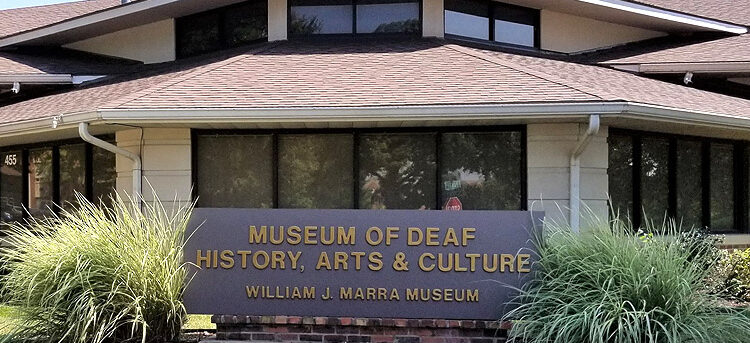
A group of deaf and hearing residents of Kansas noticed an unusual increase in the number of visitors. They were stopping by the Kansas School for the Deaf and asking about the school. These visitors were also eager to know more about deaf history and culture.
This inspired the group to establish a resource centre to meet the needs of inquiring visitors and share information. As a result, the Kansas Educational Foundation came into existence in 1988. The following four years saw the incorporation and expansion of the museum. Support poured in from the Kansas Heritage Trust and the City of Olathe.
In 2000, construction started on the structure. The building work was completed in the following year. About four years later, the museum started hosting exhibitions. It got the name Deaf Cultural Center Foundation four years later. In 2017, there was a change in the museum’s name to the Museum of Deaf History, Arts & Culture (MDHAC).
The museum showcased the vibrant history, language, arts, and culture of the deaf people. If you’re curious to know what it is like to be hearing impaired, this museum would be the right place.
The deaf experience at MDHAC
Upon getting to the museum, you’ll notice that it is neither too long nor too short. While exploring the two exhibit halls, you’ll come across some interesting exhibits and memorabilia. They’re from the early days of Kansas School for the Deaf.
In this museum, you’ll also get to watch some videos. They’ll help you know more about the Deaf experience. These videos also tell you about the experiences of growing up deaf. You’ll also get to witness some school memorabilia.
More about the Deaf culture
The word ‘deaf’ will have the capital ‘D’ when referring to the cultural elements. The Deaf culture includes several things, which you might’ve never imagined. It includes social beliefs, literary traditions, art and history. The Deaf culture also includes shared institutions, values of the deaf community, and a set of behaviours.
A famous Deaf linguist known as Carl G Cronenberg coined the term ‘Deaf Culture’. He was the first individual to explain the analogies between the hearing and Deaf cultures. His work on American Sign Language also won him recognition. For the hearing impaired, deafness is not a disease or a disability. They tend to view their condition as a difference in human experience.
Many from the Deaf community feel proud of their identity as they’re a linguistic minority. However, the ones who don’t know sign language might misunderstand those who belong to this community. One can find many distinct Deaf communities globally. Their cultural norms vary and they communicate using different sign languages.
Often, the Deaf culture also comes into contact with other types of cultural identity. It intersects with ethnicity, gender, nationality, race, class, and sexual orientation. This leads to a culture that’s small and extremely diverse at the same time.
The mission of MDHAC
The Museum of Deaf History, Arts & Culture (MDHAC) strives to advance and preserve knowledge about Deaf people. It also endeavours to preserve their cultures and languages. The MDHAC aims to inspire visitors with the experiences of the vibrant Deaf community. It believes that there’ll be an increased awareness of the values and struggles of the Deaf community.

